The week at a glance
- Albatross sp. in Norfolk
- Green Heron and American Bittern in Cornwall
- Buff-bellied Pipit still in Co Wexford
- House Crow still in Co Cork
- Possible Calandra Lark in East Yorkshire
With last week's mystery seabird in Suffolk looking most likely to have been an albatross, what must have been the same bird was seen heading west past Salthouse (Norfolk) on 30th, though somehow eluded observers at Cley.
In the southwest, the first-winter Green Heron continued to show well in the Lost Gardens of Heligan (Cornwall) all week and the county also notched up another mega with the arrival of an American Bittern at Trewey Common on 28th. It was originally found by a local farmer and thought to be a Bittern, and was only identified later from photographs. Once news was out the masses descended, and all sorts of claims and counter-claims of flushing and booting ensued. Although some of the accused were quite innocent, there was certainly plenty of poor behaviour on show. It was perhaps after the bird was attacked by a Peregrine Falcon that it chose to leave the area on 31st, but happily it was relocated at Walmsley Sanctuary the next day. It then stayed disturbance-free to the end of the week. With five previous records, Cornwall stands out as the prime county for the species.

Green Heron, Heligan, Cornwall (Photo: Lee Fuller)

American Bittern, Walmsley Sanctuary (MEMBERS ONLY), Cornwall (Photo: Adrian Langdon)
American Bittern, Trewey Common, Cornwall (Film: chippler01).
Yet another new Buff-bellied Pipit was found in Ireland, this time at Carne (Co Wexford) on 30th–1st. Also in Ireland, the House Crow remained at Cobh (Co Cork) to at least 30th.
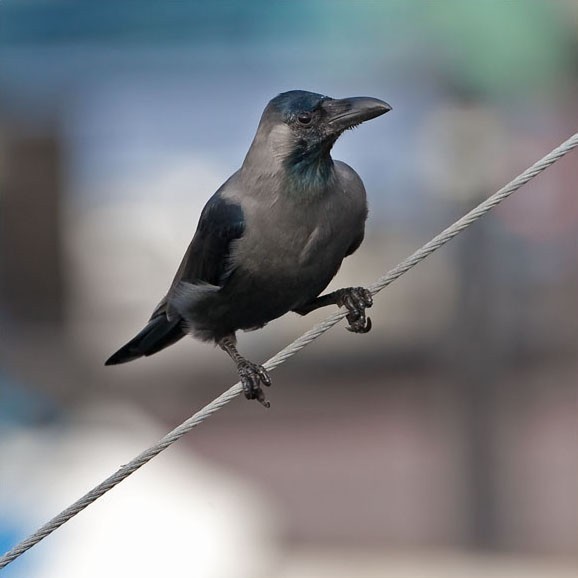
House Crow, Cobh, Cork (Photo: Michael John O' Mahony)
Last of the megas was one that got away: a possible Calandra Lark south over Spurn (East Yorkshire), on 28th. This is eerily reminiscent of 3rd October 2004 when the same thing happened.
There were no Ross's Geese to report, but vaguely genuine Snow Geese were in Argyll, Shetland, Orkney and Borders. Four Ruddy Shelducks were briefly at Coate Water Country Park (Wiltshire) on 28th, with one still at Farlington Marsh (Hampshire) on 29th and one in Langstone Harbour (Hampshire) on 30th–31st. The flock of Barnacle Geese at Bridgend (Islay) continued to provide interest, with both Todd's and Richardson's Canada Goose there on 30th.
Two Black Brants remained at Ferrybridge (Dorset) to 31st with singles at Newtownards (Co Down) to 28th, The Cunnigar (Co Waterford) to 30th, Strangford Lough (Co Down) on 31st, Frampton Marsh (Lincolnshire) on 31st and Stiffkey (Norfolk) on 1st. There was also one with two apparently hybrid juveniles at Wall Common (Somerset) on 28th.
Aside from the two drakes and a female Ferruginous Duck at Chew Valley Lake (Somerset), there were other drakes at Kingsmill Reservoir (Nottinghamshire) on 1st–3rd and at Blagdon Lake (Somerset) on 1st. The drake Ring-necked Duck also remained at Chew to 29th, with others still at Llyn Pencarreg (Carmarthen) to 30th and a new bird at Branton Gravel Pits (Northumberland) on 30th.
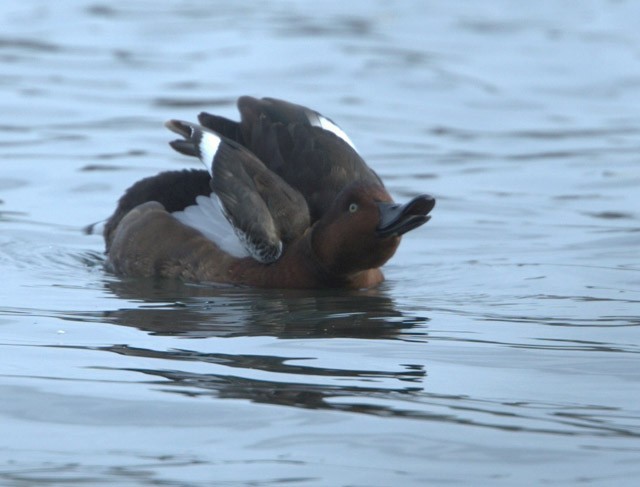
Ferruginous Duck, Kingsmill Reservoir, Nottinghamshire (Photo: Ray Purser)
The only Blue-winged Teal was another new bird in Ireland, at Bull Island (Co Dublin) on 28th–31st, and the only Lesser Scaup were at La Grande Mare (Guernsey) to 30th — this is possibly the same returning bird from winter 2009/10 — and a new first-winter drake at Ballygawley Lake (Co Sligo) on 3rd. The now moulted drake Green-winged Teal was on Cley Marshes (Norfolk) to 3rd, and other new arrivals were at Soddy Gap (Cumbria) on 29th, Loch Connell (Dumfries & Galloway) on 29th, Loch Gruinart, Islay (Argyll) on 30th and Newport Wetlands (Gwent) on 31st. The only American Wigeon was the drake that remained at Wheldrake Ings (North Yorkshire) to 3rd.

Lesser Scaup, La Grande Mare, Guernsey (Photo: Mark Guppy)

Green-winged Teal, Wigtown, Dumfries & Galloway (Photo: anon)
An immature drake Surf Scoter was new at Ynyslas (Ceredigion) on 30th–31st. The now rather comical-looking drake King Eider remained off the Suffolk coast between Minsmere and Dunwich Cliffs all week, with one also still at Burghead (Moray & Nairn) to 31st.
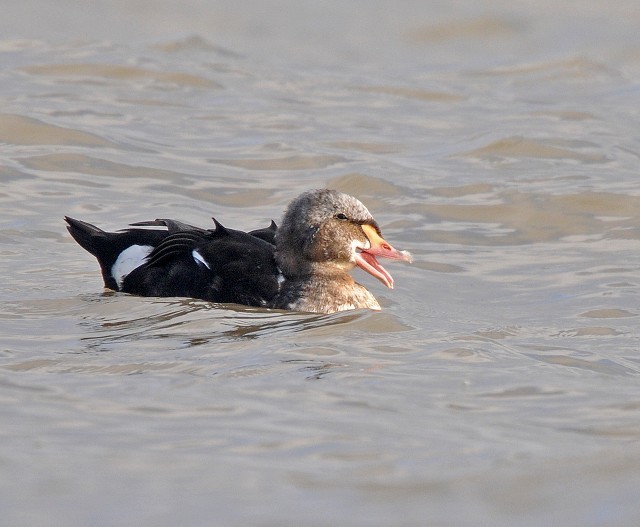
King Eider, Dunwich Cliffs, Suffolk (Photo: Jon Evans)
At sea, the only records of Sooty Shearwater received were 35 past Mizen Head (Co Cork) on 28th, two past Dungeness (Kent) on 30th and singles past the Isle of May (Fife) on 30th and Flamborough Head (East Yorkshire) on 2nd. At times seawatching conditions were good, and impressive species counts included 48 Balearic Shearwaters past Pendeen (Cornwall) on 2nd, 16 Pomarine Skuas past Berry Head (Devon) on 29th and a massive 3908 Little Auks past the Isle of May in just one hour on 29th.
The Otter estuary (Devon) Glossy Ibis remained all week, as did the bird at Welney (Norfolk), with one also still in Wexford, reported at Tacumshin on 1st. Others were at Southwold (Suffolk) on 30th and again at Cotswold Water Park (Gloucestershire) on 1st. Great White Egrets remained at Minsmere (Suffolk), Idle Valley NR (Nottinghamshire), Pitsford Reservoir (Northamptonshire) and Dungeness (Kent) with singles briefly at eight other sites across the country.
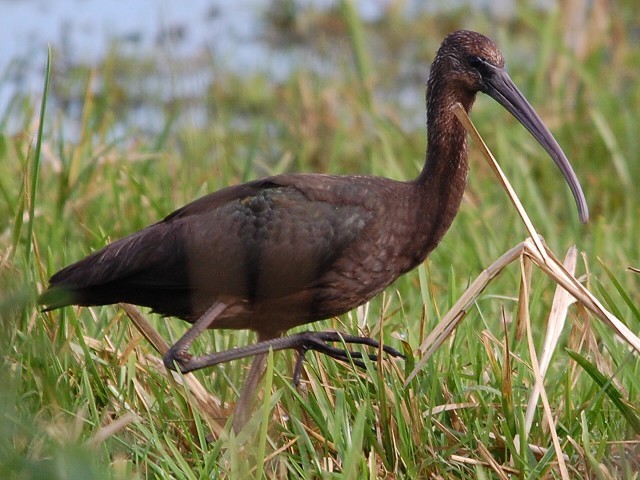
Glossy Ibis, Welney (village), Norfolk (Photo: Trevor Hill)

Great White Egret, Minsmere RSPB, Suffolk (Photo: Mark Bicknell)
Single Cattle Egrets also remained at Donna Nook (Lincolnshire) all week and at Poyston (Pembrokeshire) to 2nd, with plenty of others: Westleigh (Devon) on 31st–3rd, Guyhirn (Cambridgeshire) on 1st–3rd, Great Blakenham (Suffolk) on 2nd–3rd and Cley Marshes (Norfolk) on 2nd. The Squacco Heron also remained at Angle Bay (Pembrokeshire) to at least 2nd.

Cattle Egret, Great Blakenham, Suffolk (Photo: Steve)
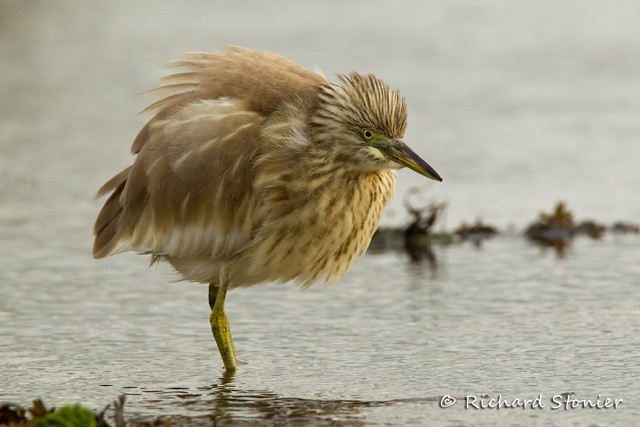
Squacco Heron, Angle Bay, Pembrokeshire (Photo: Richard Stonier)
The week saw fewer than 25 Rough-legged Buzzards along the east coast, with five in Norfolk (including two at Burnham Overy), four in East Yorkshire and three in South Yorkshire. The only inland birds were probables at Yoxall (Staffordshire) on 30th and Swithland Reservoir (Leicestershire) on 1st. The contentious possible Sharp-shinned Hawk on St Mary's (Scilly) was luckily caught on 3rd, and although looking rather strange in the hand was in fact just a Sparrowhawk. A very late juvenile Red-footed Falcon was at Fife Ness (Fife) for 10 minutes on 2nd and a juvenile American Kestrel at Landguard (Suffolk) on 3rd caused a small stir until its owners came to pick it up!
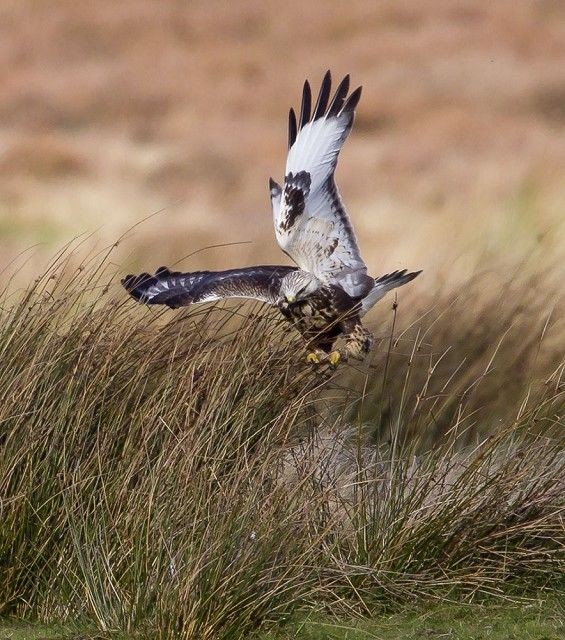
Rough-legged Buzzard, Sleddale, Cleveland (Photo: Renton Charman)

Red-footed Falcon, Fife Ness, Fife (Photo: anon)

Escaped American Kestrel, Landguard NR, Suffolk (Photo: Jon Evans)
Various American Golden Plovers remained, at Eoropie, Lewis (Outer Hebrides) to 28th, Lissagriffin (Co Cork) to 29th, Moyne (Co Tipperary) to 29th, Cley and Blakeney (Norfolk) to 3rd and Turf (Devon) to 3rd, with new birds at Freiston Shore (Lincolnshire) 31st–3rd and an adult at Fleck (Shetland) on 30th.

American Golden Plover, Cley Marshes NWT, Norfolk (Photo: Steve)
All the Buff-breasted Sandpipers have now departed and there were only three reports of Pectoral Sandpiper: a bird at Welney (Norfolk) to 29th, probably the same bird on the Ouse Washes (Cambridgeshire) on 31st, and another at Low-Newton-by-the-Sea (Northumberland) to 28th. The only White-rumped Sandpiper was on Clonea Strand (Co Waterford) still to 31st and the Spotted Sandpiper remained on St Agnes (Scilly) to 31st. The only Lesser Yellowlegs were on Port Meadow (Oxfordshire) all week and again at Tacumshin (Co Wexford) on 31st.

Spotted Sandpiper, St. Agnes, Scilly (Photo: James Packer)
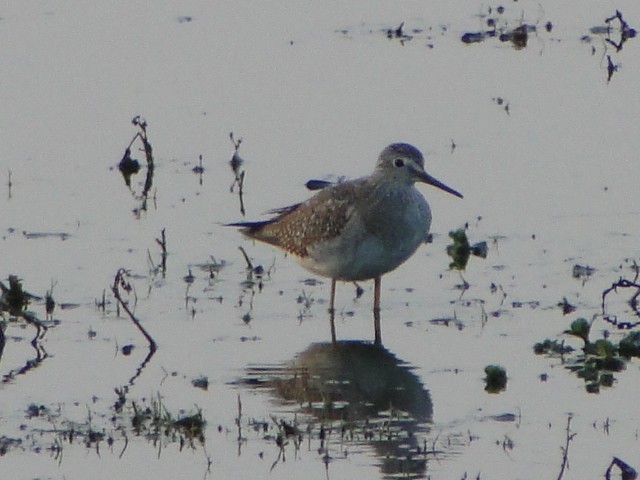
Lesser Yellowlegs, Port Meadow, Oxfordshire (Photo: David Brown)
At least 16 Grey Phalaropes were well scattered, including three in Hampshire and three in Norfolk (two of which were together at Cley most of the week). Others were in Shetland, Orkney, Argyll, Cumbria, Lancashire, Co Clare, Gwent, Suffolk, Hampshire and Dorset, with an inland bird at Rutland Water (Leicestershire).

Grey Phalarope, Cley Marshes NWT, Norfolk (Photo: Richard Jones)
There were a dozen Glaucous Gulls around, including three in Orkney, two in Shetland and two in Devon. There were smaller numbers of Iceland Gulls, with the long-stayers still at Ayr to 2nd and Cobh (Co Cork) to 2nd, with others at Loch Gruinart (Argyll) on 29th, St Agnes (Scilly) on 31st and Brough of Birsay (Orkney) on 2nd. Ring-billed Gulls remained at Oban (Argyll) to 30th and again at Prescot Reservoir (Lancashire) on 31st, with new birds at Gosport (Hampshire) on 28th–30th and London Wetland Centre on 1st.
An adult Franklin's Gull commuting between Willington Gravel Pits and Foremark Reservoir (Derbyshire) on 28th–3rd was either a new arrival, or the Staffordshire bird returned, and represented the first record for the county. The adult Sabine's Gull was still in Cobh (Co Cork) and others were on the Ogmore estuary (Glamorgan) on 28th, off St David's Head (Pembrokeshire) on 30th and off Bass Point (Cornwall) on 31st.

Franklin's Gull, Foremark Reservoir, Derbyshire (Photo: Mr Lawton)
The second Pallid Swift of the autumn was a typically late bird that showed well over Dunwich Heath (Suffolk) on the evening of 30th. The only remaining Wryneck was on St Mary's to 28th. The Short-toed Lark was also still on North Ronaldsay (Orkney) to 1st with Unst (Shetland) seeing birds at Norwick on 28th, Halligarth on 1st and Baltasound on 2nd. A few groups of Shore Larks seem to be settled for the winter now, with 12 at Dingle Marshes (Suffolk), 12 at Dunwich Heath (Suffolk), 11 at Titchwell (Norfolk), 8 at Beacon Ponds (East Yorkshire) and 4 at John Muir Country Park (Lothian) during the week. Smaller numbers were also reported in Lincolnshire, North Yorkshire and Northumberland.

Short-toed Lark, Halligarth, Unst, Shetland (Photo: Robbie Brookes)
The Waxwing invasion continued apace, with still more birds pouring into northern Scotland. There were several flocks of over 300 birds in Scotland, with the largest numbering over 1,000 at Kirkfield (Highland), 700 at Kincorth (Aberdeenshire) and 500–1,000 in Inverness. The only one southwest of a line from Anglesey to East Sussex was one on St Agnes (Scilly) on 1st–2nd.

Waxwing, Aberdeen, Aberdeenshire (Photo: Alan Sinclair)
There were just five Richard's Pipits this week, with birds on Bryher (Scilly) on 28th, Cape Clear (Co Cork) on 30th, the Alaw estuary (Anglesey) on 30th, at Covehithe (Suffolk) on 2nd–3rd and at Sidestrand (Norfolk) on 2nd. Somewhat sadly, this was the first week without any Red-flanked Bluetails since the middle of September, though at least one of the Black-throated Thrushes persisted, on Fair Isle (Shetland) to 29th.

Richard's Pipit, Covehithe, Suffolk (Photo: Chris Darby)
The late Dusky Warbler remained on St Mary's (Scilly) to at least 2nd and the same island saw a possible Blyth's Reed Warbler on 29th–30th and a Marsh Warbler on 31st. Late Barred Warblers remained at Howick (Northumberland) to 29th and Gibraltar Point (Lincolnshire) on 30th, and on Shetland a Western Bonelli's Warbler was at Helendale on 29th–1st.
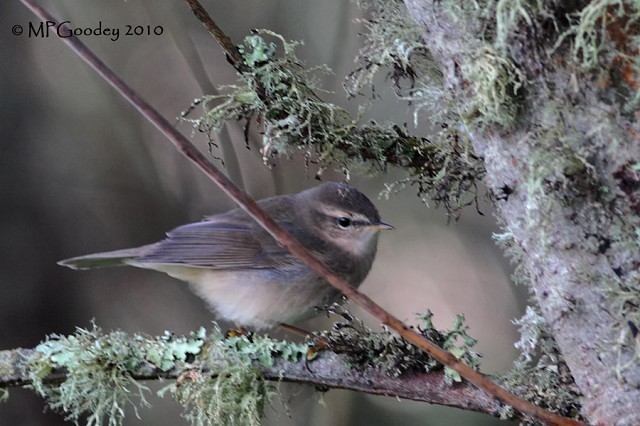
Dusky Warbler, St. Mary's, Scilly (Photo: Martin Goodey)
There were at least 48 Yellow-browed Warblers this week, with an impressive 13 in Cornwall alone. Trailing behind were the Isles of Scilly with six, Co Cork with five, Devon with four and Pembrokeshire with three. There was also another possible Hume's Leaf Warbler at Rame Head (Cornwall) on 30th. At least 19 Pallas's Warblers were dotted around, with no fewer than eight visiting Bird Observatories. There were four in East Sussex and three in East Yorkshire, and two were caught at Whitby (North Yorkshire) on 31st, one of which had been ringed on 27th October in The Netherlands. The only Red-breasted Flycatcher left in the country was one still on St Mary's (Scilly) to 31st.

Pallas's Warbler, Filey, North Yorkshire (Photo: Dave Mansell)
Great Grey Shrike numbers were down to fewer than 30 now, including five in Hampshire, three in Somerset and three in Lancashire. Others were spread over a further 15 counties, with just one in Scotland at Loch Kinord (Aberdeenshire) on 30th.

Great Grey Shrike, Napton-on-the-Hill, Warwickshire (Photo: Peter Walkden)
The only Arctic Redpoll was a hornemanni at Toab (Shetland) to 28th but a few of the late Serins persisted, with the Isles of Scilly seeing one on St Mary's to 29th and possibly the same on St Agnes on 30th. The only other was in Winspit Valley (Dorset) on 28th.
The only Common Rosefinch was on St Agnes (Scilly) on 31st. It may be that everyone is bored of reporting Lapland Buntings now, but numbers seem well down. The peaks reported were 63 at Hen Borth near Cemlyn Bay (Anglesey) on 31st, 60 on Holy Island (Northumberland) on 1st and 24 at Spurn (East Yorkshire) on 30th. Rounding off the buntings was a late Ortolan Bunting at Formby Point (Lancashire) on 29th.
Last but not least were a few interesting races. These included a 'northern' Hen Harrier (hudsonius) at Tacumshin (Co Wexford) on 31st–3rd, a 'Nordic' Jackdaw (monedula) at Aberlady Bay (Lothian) on 29th and a 'northern' Long-tailed Tit seen heading west along Blakeney Point (Norfolk) on 31st and later seen at Stiffkey, still heading west. There were also a report of nine, with three other odd-looking pale-headed birds, at Winterton-on-Sea (Norfolk) on 2nd.

Northern Long-tailed Tit, Stiffkey, Norfolk (Photo: Ashley McElwee)
Photo of the Week: 28th October–3rd November 2010

Pheasant, Kirkcudbright, Dumfries & Galloway (Photo:
Alan McFadyen)
Most bird photos show either the whole of a bird or at least the whole of its head! It therefore takes considerable creative vision to spot a compositional opportunity involving less of a bird than this. The image of a Pheasant peeping round a tree uploaded by Alan McFadyen this week is a great example. For some reason, this pose seems to hook something in us: maybe memories of childhood games or something else, who knows? Either way, Alan's image started collecting Thumbs-Up votes as soon as it was uploaded. Portrait photographers who shoot humans are under increasing pressure to find alternative ways of depicting their subjects (a famous RSPB shot of Simon Barnes peering round a tree springs to mind!), so maybe this is a timely spur for bird photographers to do likewise.
Other notable photos
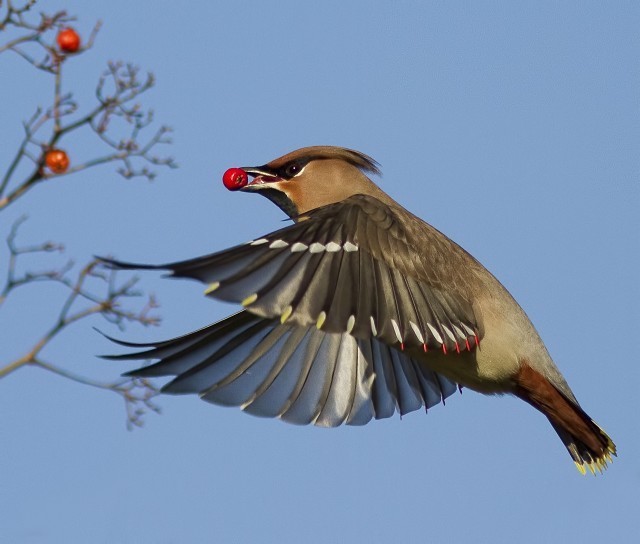
Waxwing, Ashington, Northumberland (Photo:
Keith Cochrane)

Little Owl, undisclosed site, Worcestershire (Photo:
Mark Hancox)

Goldcrest, Salehurst, East Sussex (Photo:
Will Rawles)

Arctic Tern, undisclosed site, Northumberland (Photo:
L Morris)

Pintail, Martin Mere WWT, Lancashire (Photo:
Steve Oakes, AEBS Limited)

Great Grey Shrike, Napton-on-the-Hill, Warwickshire (Photo:
Peter Walkden)
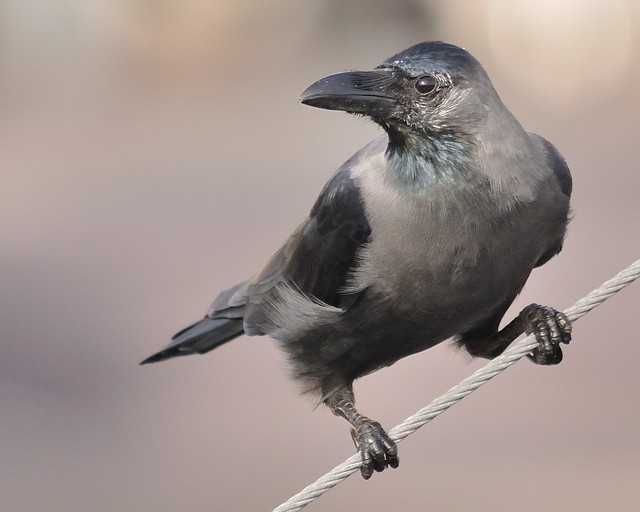
House Crow, Cobh, Cork (Photo:
Ronan McLaughlin)
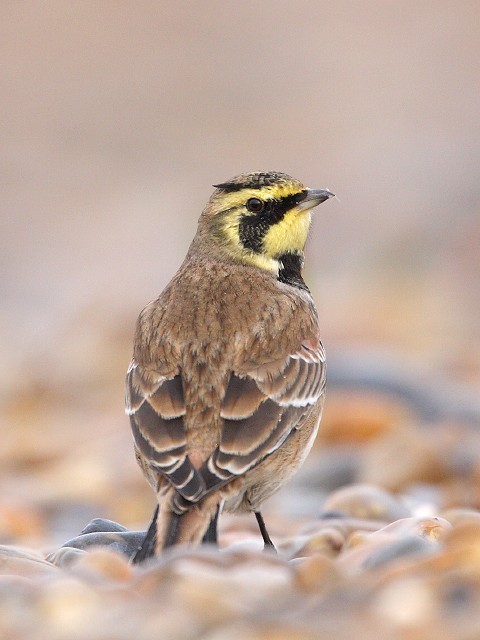
Shore Lark, Dingle Marshes SWT, Suffolk (Photo:
Chris Mayne)

Yellowhammer, Doonfoot, Ayrshire (Photo:
Chas Moonie)

Crested Tit, Abernethy Forest RSPB, Highland (Photo:
Jim Duncan)

Goldfinch, Pennington Marshes, Hampshire (Photo:
Simon Johnson)
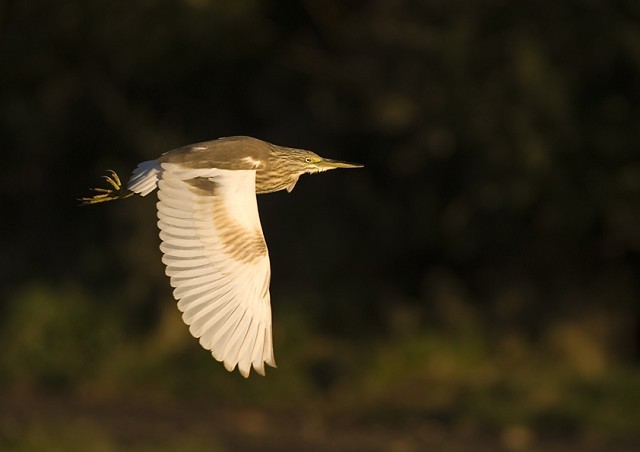
Squacco Heron, Angle Bay, Pembrokeshire (Photo:
Sara Anderson)

Starling, Aldeburgh, Suffolk (Photo:
Carl Wright)

Jay, undisclosed site, Kent (Photo:
Mick Southcott)

Blue-cheeked Bee-eater, Bahrain (Photo:
Adrian Drummond-Hill)

Red Grouse, Faseny Bridge, Lothian (Photo:
James Wood)
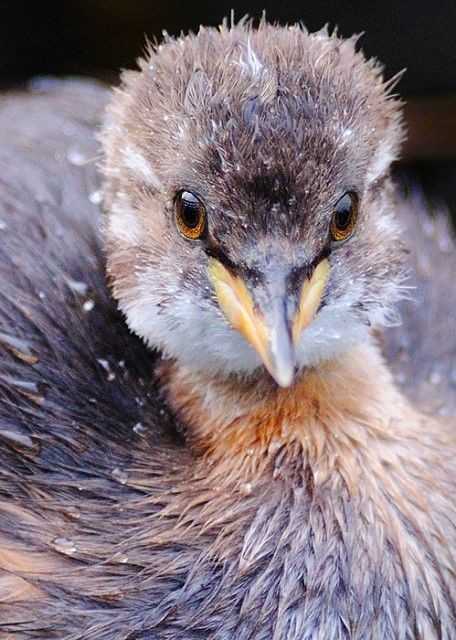
Little Grebe, London Wetland Centre WWT, Greater London (Photo:
Tom Hines)

Hoopoe Lark, Qatar (Photo:
John A Thompson)
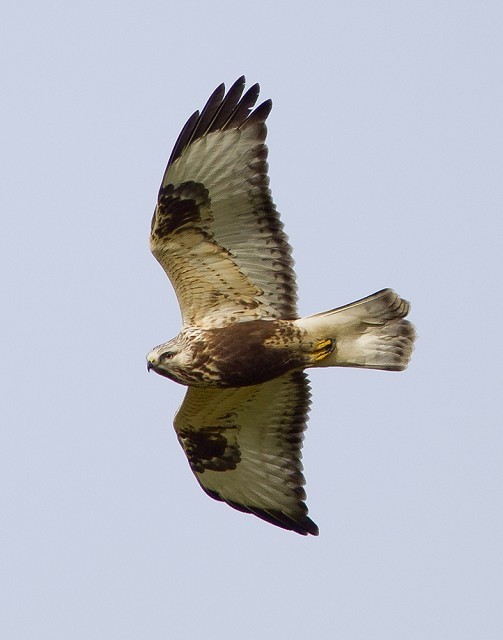
Rough-legged Buzzard, Sleddale, Cleveland (Photo:
Renton Charman)

Little Stint, Turkey (Asian) (Photo:
Kemal Kahraman)

